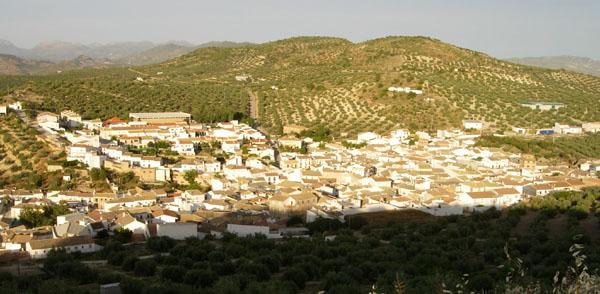
It is placed to an altitude of 600 meters and to 86 kilometers of the capital of the province, Cordova. Because from the antiquity, there has been the human presence in this locality; the most important archaeological deposit it is constituted by the remains of that it was a city Iberian - Roman.
Once in the center of the villa, after knowing the Museum, an obliged visit deserves the Parochial church of Our Lady of the Rosario, of the 18th century with precious baroque works in his interior. Also, the hermitage of the Calvary is interesting and to finish a panoramic vision of the whole locality and the subAndalusian region from the viewing-point that we will find in his higher part. Places where several routes of hiking can be realized by the surroundings of the Hill of The Heads. In addition this municipality forms a part of the tourist route " oil, baroque art, archaeology and nature ". In his gastronomy, the virgin olive oil is fundamental to elaborate plates as the soup of beans with mayonnaise, soup of meatballs, fried ring-shaped rolls or the traditional pottage of Holy Week. The carnival landfill emphasizes also, sausage that prepares itself with the stomach of the pork in the above-mentioned festivity.
Fuente-Tójar's history always has been tied to the oil, to the dancers of San Isidro, to the hills of The Table and of The Heads. Here, on prehistoric substrates, of iberorromana of Sucaelo or, the most probable thing of iliturgicola, that managed to enjoy the category of municipium. The mount places to East of the mentioned municipality and is perfectly delimited by walls of different invoices that encintan an extension of more than 20 hectares.
For the appeared remains Fuente-Tójar counts from very ancient in the concert of the zones oil bottles. Nowadays his oils have reputation for his small acidity, bitter flavor, greenish color, agreeable smell and for his antitrust characteristics, peculiarities that he come given because in his territory there exist different varieties of oleaginous plants, many of them cultivated from vague epochs. The oils of better quality are obtained of the varieties carrasqueña and pointed. If we join his climate and orography (Medina altitude and limy soils and cascajosos) we might say, as already were adding Plinio and Columela 2.000 years ago, that it is a suitable enough zone for the culture of the olive grove and, for the end, to the quality of the product.

0 Reviews